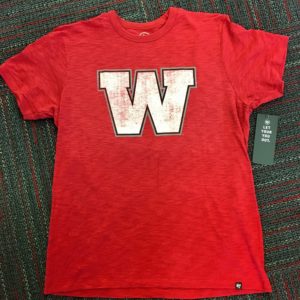Across the Fields on Easter Morning
One of my favorite highway signs has always been “Merge” because it’s usually wonderful when different lanes or people or traditions or what-have-you can flow together.

Off the road, I had an experience over the weekend that brought into the present elements of a past I never even knew.
Since Easter is all about rejuvenation, I tried something new this time. Instead of dressing up and getting in the car with family members (one of whom would be doing three services in a town far away) I put on jeans before anyone was up and walked across our field to a sunrise service I’d never attended before. It felt strange to be heading out this way without my dog, but this was not a regular day.

The sponsoring church was Bow Mills United Methodist; probably for a number of Easters now they have made some arrangement with my neighbor at Dimond Hill Farm. They are part of a long tradition, which I read about here.
Years ago, when I excitedly let my mother know that I’d just become engaged to someone who was on his way to becoming an Episcopal priest, she had a quick and emphatic reaction. “But Polly, we’re Methodists!”
That was news to me. But she was being her lighthearted rather than her serious self; plus I knew she was very fond of her son-in-law to be.
What she meant was that on both her Canadian side of the family as well as on my father’s Brooklyn (kind of a country) side, our ancestors had been Methodists. For various reasons, mysterious to me still, the faith tradition had fallen off during the era when my grandparents raised their children.
If I’d known then what I know now, I might’ve smartly replied, “But Mom, the Methodists grew out of the Episcopalians, or at least the Anglicans!”
But back to the service for a moment, before the sun comes up fully.

It was dramatic, and it was short. I have no idea whether Methodists are more inclined to use various art forms in their worship, but this one included a couple of surprises, at least to me.
After some initial words from the pastor (I presume) in charge, our attention was directed to behind us where two men in robes acted out a conversation between two of Jesus’s disciples; well, it wasn’t actually a conversation because one of the men — I learned later he was the Beloved Disciple– was doing all the talking, to his companion Peter. He was, essentially, overcome by everything that had happened ever since he had started being a Jesus follower—how to make sense of it? The scene ended with the two men running off to find out why there was a most peculiar light happening all around them.
A few minutes later, our attention directed back to the front of the gathering, we watched an interpretive dance. The pastor (again, if that’s who he was; maybe not) and three women demonstrated through movement the story of Jesus’s death and then resurrection, the breaking free from the tomb. I can’t recall when I’d ever seen anything like it during a church service before.
And then, after one hymn led by a couple with a guitar, we dispersed.
As I walked back home, I wondered what two gentlemen – one from the 18th century, the other from the 19th—might have thought of the service.

John Wesley (1703 -1989) is known as the founder of Methodism, but he began – and in his own view, stayed—Anglican all his life. This will take me some time to figure out. Apparently, though, one thing he really approved of was empowering people to do a lot of outdoor preaching. So in that sense at least he probably would have felt right at home on the hillside with us.
In our family, Wesley lives on primarily through our longstanding devotion to the institution of higher learning that was the first to bear his name. Early on, it was definitely a Methodist campus; now, not so much.

The other gentleman I was considering was, ahem, my own great-great-great grandfather (let’s hope I have that right); Edward Gayer Andrews, who served as a Methodist bishop for a whopping 32 years, from 1872-1904. He was a very active leader in his time, and we hope a wise one. One of my cousins has his portrait. Who knows, maybe it was fate that I would bring a bishop back into our family. It’s tempting to wonder what kind of conversation he and my husband could have, if only.
That not being possible, I’ve gone and ordered a book about him; here’s the description. Written by Francis John McConnell, apparently quite a scholar of religion, it was apparently re-issued in 2012 by a company called “Forgotten Books.” Now there’s a promising market! We won’t tell the old guy that his biography went this route. Anyway, look at the title: Edward Gayer Andrews: A Bishop of the Methodist Episcopal Church.
So all this time I’ve thought the two denominations shared the Protestant banner but were mostly distinct; my own ancestor reminds me that there have always been common roots.
You learn something new – or maybe something old – on every Easter.

